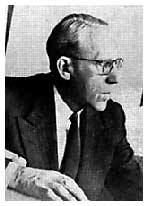Take a comic books with a characteristic crime title, a lurid cover with a picture of one gangster about to be murdered by some other gangsters, and an inconspicuous circle with a purple passage of ethical make-believe:
"This magazine is dedicated to the prevention of crime. We hope that within its pages the youth of America will learn to know crime for what it really is: a sad, black, dead end road of fools and tears." Compare with this sentiment some of the highlights inside this cover:
1) A criminal terrorized a family on a farm, makes advances to the farmer's young wife and beats the farmer when he objects.
2) He takes the little boy into the woods as a hostage.
3) The little boy, after a while, says: "I can't go any faster an' I don't care! You're gonna kill me anyhow!"—to which the criminal replies: "Ya wise little rat! I'll kill ya! But before I do I'll knock yer teeth out!!"
4) The little boy, as he is being beaten, "OH-H-H-H-H-H-H . . ."
5) In the end, the criminal, who of course committs many other crimes in the course of the story, is not punished by the law, but like a hero refuses to give himself up, and shoots himself.
This story has ninety-seven pictures of where the criminal is winning and one for the apotheosis of his suicide. Of course there is a gun advertisement, too. If the child who read the purple passage on the cover—if he did read it—reads the book this far, he knows that this passage has nothing whatsoever to do with the contents of the comic book.


<< Home